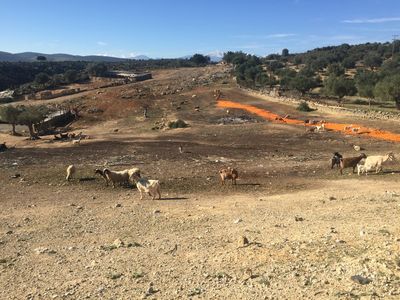Kentos: Socio-Ecologies of CareMetaxia Markaki

What is the relation of humanity to the “rest of nature?” Situated in the epoch of the Anthropocene and as concerns about climate emergency dramatically rise, the paper looks beyond the human/nature ontological separation and narratives of domination, in order to investigate the possibility of alternative world views and practices, instrumental for socio-ecological repair. Kentos, deriving from the greek verb kentaw (embroider or sting), describes the harvest practice of mastiha tree, which grows solely on Chios island. In the precision of the manual labour and the rituality of Kentos, one can read beyond pure production, a relationship of mutuality and a socio-ecological bond unfolding between human bodies, trees and their environment. The paper revisits the mastiha landscapes of Chios island, at North Aegean in Greece and narrates the story of relations that have occurred between humans and a tree native to the island, the Pistacia lentiscus var. Chia. It unpacks this socio-ecological bond and its various social, political and economic extensions, investigating how this interspecies relation has operated in history as a productive force and how it has survived in the present time, entangled in capitalist flows, climatic and urban pressures. The aim is to explore knowledge latent in interspecies relations that occur in territories entangled in capitalist processes of extended urbanisation. Gathering this knowledge aims at informing alternative concepts and strategies for dealing with the contemporary socio-ecological challenges. The paper employs a methodology of relational thinking: it problematises and retracts strict ontological boundaries between human and ‘the rest of Nature’. By doing so it reveals a whole new space of relations between species and sets for an exploration of the relations that we encounter there. This space is examined and conceptualised through qualitative ethnographic work, analysis of documentary sources, oral history and secondary sources that have captured intentionally or unintentionally facets of the socio-ecological bond. Concluding, the paper identifies a socio-ecology of care nested in interspecies relations. It reveals care as a latent interspecies practice, as situated knowledge, as a more-than-human collective, and as an intrinsic value of reciprocity between forms of life, within and beyond capitalism, generating alternative socio-political formations and alternative vision. The paper ends with a proposition: care is a choice, a valid alternative option for design space, strategy and practice to re-engage productively with the “rest of nature,” material and living world.

